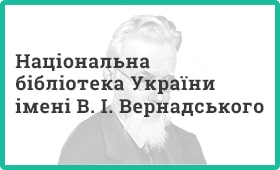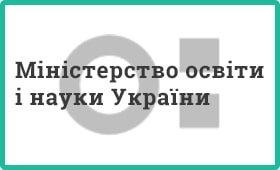| JEL Classification: A22; C13; I20; I21 |
DOI: https://doi.org/10.31521/modecon.V42(2023)-01 |
Batsurovska Ilona, Doctor of Pedagogy, Associate Professor, Professor of Department of Electric Power Engineering, Electrical Engineering and Electrical Mechanics, Mykolayiv National Agrarian University, Mykolayiv, Ukraine
ORCID ID: 0000-0002-8407-4984
e-mail: batsurovska_ilona@outlook.com
Dotsenko Nataliia, Doctor of Pedagogy, Professor, Professor of Department of General Technical Disciplines, Mykolayiv National Agrarian University, Mykolayiv, Ukraine
ORCID ID: 0000-0003-1050-8193
e-mail: dotsenkona@mnau.edu.ua
Gorbenko Olena, PhD (Technical Sciences), Associate Professor, Associate Professor of Department of Agroengineering, Mykolayiv National Agrarian University, Mykolayiv, Ukraine
ORCID ID: 0000-0001-6006-6931
e-mail: gorbenko_ea@mnau.edu.ua
Polyansky Pavlo, PhD (Economical Sciences), Associate Professor, Vice-Head of Department of General Technical Disciplines, Mykolayiv National Agrarian University, Mykolayiv, Ukraine
ORCID ID: 0000-0001-5661-8166
e-mail: polyanskypm@mnau.edu.ua
Ivanov Gennady, PhD (Technical Sciences), Associate Professor, Associate Professor of Department of General Technical Disciplines, Mykolayiv National Agrarian University, Mykolayiv, Ukraine
ORCID ID: 0000-0002-3861-7300
e-mail: ivanovgo@mnau.edu.ua
The Creation of Educational Video Content in the Learning Management System of Higher Education Institution
Abstract. Introduction. A Learning Management System (LMS) is used to create, manage, and deploy online educational courses and resources, as well as track student activity. The creation of educational video content for LMS can significantly enhance the learning process and make materials more accessible to students. Well-structured and engaging educational video content can promote effective learning of the material.
Purpose. The article presents a method for creating educational video content within a higher education institution’s learning management system. The proposed method addresses the challenges of presenting audio-visual content in this environment.
Results. The preparation of educational video content includes the following stages: creating a presentation for an audio-visual lecture, preparing text or graphic information to explain the material on the slide, recording an educational video and placing it in the learning management system. The learning management system of a higher education institution requires educational video content to include an annotation and tasks to ensure the quality of material comprehension. The content should be clearly structured. In separate logical parts of a video lecture or an audio-visual explanation for the performance of practical or laboratory work, the goals and objectives of the topic should be clearly defined, the presented content should be supplemented with graphics, mathematical and logical formulas and expressions, structural and logical diagrams, computer animation methods. An experimental study was conducted to analyze the quality of knowledge before and after the implementation of the developed technology. The results before and after the experiment were evaluated by the Pearson correlation coefficient.
Conclusions. The higher education institution implemented technology for creating educational video content in their learning management system. This was accompanied by a distance course, where video lectures were posted in open access and structured according to the curriculum. The article describes the stages involved in introducing educational video content into the educational process. These stages include preparation, evaluation of the video lecture, and its presentation in the learning management system and educational and methodological literature. The experimental verification of the proposed technology for creating educational video content supports its feasibility for application in the learning management system of a higher education institution.
Keywords: educational video content, pedagogical technology, applicants of higher education, learning management system.
References:
- Menezes, F. Rodrigues, R. & Kanchan, D. (2021). Impact of Collaborative Learning in Electrical Engineering Education. Journal of Engineering Education Transformations, 34, 116-117. 10.16920/jeet/2021/v34i0/157117 [in English].
- Mil’shtein, S. & Tello, S. (2019). Innovation as Part of Electrical Engineers Education. Current Journal of Applied Science and Technology, 1-7. 10.9734/cjast/2019/v33i130044 [in English].
- Nawaz, S., Usman, M. & Strobel, J. (2013). Analysis of the Influence of the International Journal of Electrical Engineering Education on Electrical Engineering and Electrical Engineering Education. International Journal of Electrical Engineering Education, 50, 316-340. 10.7227/IJEEE.50.3.11 [in English].
- Diaz Lantada A. (2020). Engineering Education 5.0: Continuously Evolving Engineering Education. International Journal of Engineering Education, 36, 1814-1832. 10.7227/IJEEE.50.3.11 [in English].
- Jandhyala, J. Tilak. (2020). Engineering Education in India. 5040/9781350192409.ch-008 [in English].
- Bibekananda, B. Basu. (2021). The Art of Teaching in Engineering Education [in English].
- Yin, Z. & Lei, X. (2019). Integration of Theory and Practice Teaching in Electrical Specialty for Applied University, International Conference on Applications and Techniques in Cyber Intelligence ATCI, 2019. [in English].
- Yu, Y. & Li, J. (2017). Research on the reform of mixed teaching mode in electrical specialty. Revista de la Facultad de Ingenieria, 32, 393-396 [in English].
- Wu, T. (2018). Exploration and practice of talent training mode of mechanical and electrical specialty under the background of engineering education. IPPTA: Quarterly Journal of Indian Pulp and Paper Technical Association, 30, 444-450 [in English].
- Titovskii, S. (2020). Virtualization And Problems Of Training It Specialists, European Proceedings of Social and Behavioural Sciences EpSBS [in English].
- Hamade, R. F., Artail, H. A. & Jaber. M. Y. (2017). Evaluating the learning process of mechanical CAD students. Computers & Education, 49(3), 640-661. 1016/j.compedu.2005.11.009 [in English].
- Manikandan, A. & Muthumeenakshi, M. (2018). Role of Engineering Education in Sustaining the Economic Development of India, International Journal of Mechanical Engineering and Technology, 9(3), 706–710 [in English].
- Shamshina, I. (2018). Professional competences necessary for the bachelor-degree-holding engineer specialising in engineering industries. Pacific Science Review, 16, 2, 85-88. 10.1016/j.pscr.2014.08.018 [in English].
- Al-Samarraie, & Saeed, H. (2018). A systematic review of cloud computing tools for collaborative learning: Opportunities and challenges to the blended-learning environment”. Computers & Education. 124. 77-91. 10.1016/j.compedu.2018.05.016 [in English].
- Jingwei, L. P., Antonenko, D. & Wang, J. (2019). Trends and issues in multimedia learning research in 1996–2016: A bibliometric analysis. Educational Research Review, 28, 100282. 10.1016/j.edurev.2019.100282 [in English].
- Kozak, T. M. (2022). Intensification of lecture at higher school by means of multimedia presentations. Information techologies and learning tools, 28, 2. doi.org/10.33407/itlt.v28i2.651. [in Ukrainian].
- Klochek, H., Hryhorii, D. & Baraniuk, O. (2019). Word and slide in a lecture: the problem of synergetic effect. Information techologies and learning tools, 72 (4), 26-40 doi.org/10.33407/itlt.v72i4.2480. [in English].
- Bondarenko, T. V. (2018). Pecularities of software prezi usage for designing educational presentations. Information techologies and learning tools, 63, 1, 1-11. 10.33407/itlt.v63i1.1907. [in Ukrainian].
- Hlynsky, Y. M. & Ryazhska, V. A. (2018). Electronic educational video resourse as a theme-building learning tool in the higher mathematic course. Information techologies and learning tools, 68, 6, 64-76. [in Ukrainian].
- Hlynsky, Y. M., Fedasiuk, D. V. & Riazhska, V. A. (2018). Development and usage of the electronic video resourses for educational purposes. Information techologies and learning tools, 58, 2, 67-78. 10.33407/itlt.v58i2.1580. [in Ukrainian].
- Kulmagambetova, S. S., Iskindirova, S. K., Kazhiakparova, Z. S., Bainiyeva, K. T. & Pandya, C. (2016). Comparative Review of Pedagogical Technologies in the Educational Process of Higher Educational Institutions. International Journal of Environmental & Science Education, 11(9), 2567-2581. 10.12973/ijese.2016.707a [in English].
- Uchitel, A, Batsurovska, I, Dotsenko, N, Gorbenko, O & Kim, N. (2020). Implementation of future agricultural engineers’ training technology in the informational and educational environment. Proceedings of the 8th Workshop on Cloud Technologies in Education (CTE 2020). Kryvyi Rih, Ukraine, December 18, 2020. 233-246 [in English].
- Batsurovska, I. (2021). Technological model of training of Masters in Electrical Engineering to electrical installation and commissioning. Journal of Physics: Conference Series, 1946, XIII International Conference on Mathematics, Science and Technology Education (ICon-MaSTEd 2021) 12-14 May 2021, Kryvyi Rih, Ukraine, 1946 012015 [in English].
- Dotsenko, N. (2021). Technology of application of competence-based educational simulators in the informational and educational environment for learning general technical disciplines. Journal of Physics: Conference Series, Volume 1946, XIII International Conference on Mathematics, Science and Technology Education (ICon-MaSTEd 2021) 12-14 May 2021, Kryvyi Rih, Ukraine, 1946 012014 [in English].
- Plackett, R. L. (1983). Karl Pearson and the Chi-Squared Test. International Statistical Review. International Statistical Institute (ISI), 51 (1), 59–72. 10.2307/1402731. JSTOR 1402731[in English].
Received: 28 November 2023

|
How to quote this article? |
| Batsurovska I., Dotsenko N., Gorbenko O., Polyansky P., Ivanov G. (2023). The Creation of Educational Video Content in the Learning Management System of Higher Education Institutio. Modern Economics, 42(2023), 5-11. DOI: https://doi.org/10.31521/modecon.V42(2023)-01. |










 Українська
Українська